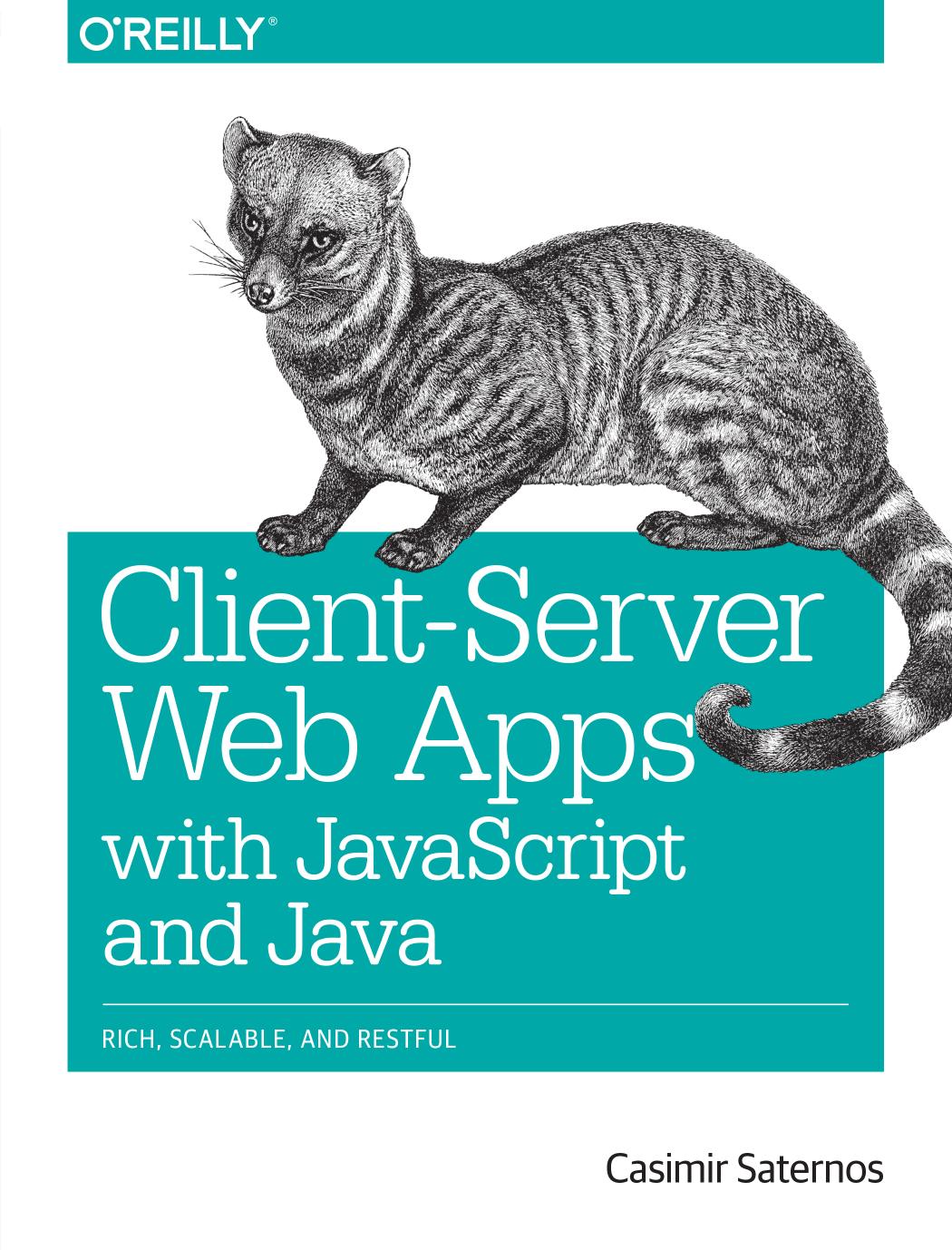Client-Server Web Apps with JavaScript and Java by Casimir Saternos

Author:Casimir Saternos
Language: eng
Format: epub, pdf
ISBN: 9781449369330
Publisher: O’Reilly Media, Inc.
Published: 2014-06-13T16:00:00+00:00
Software Tools
Selection of programming languages, development tools, and frameworks is a major area where an architect steers project direction. The power and constraints available to individual programmers throughout development of a project are influenced heavily by these decisions. Technologies and their associated workflows were created with a variety of values in mind. Productivity will inevitably be impacted this selection.
In Software Tools (Addison-Wesley Professional, 1976), Brian Kernighan famously said, “Controlling complexity is the essence of computer programming.” The range of software tools that have assisted in the attempt to tame complexity touch on every part of the software development life cycle: version control systems, automated documentation, coverage and quality reports, testing tools, issue management systems, and continuous integration servers, to name a few. Besides these, the simple everyday tools a developer has mastered can be the difference that makes a developer an order of magnitude more effective than his peers.
Each language has associated build tools. Although you can mix and match languages and build tools, there is a close associate between Maven for Java, Gradle for Groovy, SBT for Scala, and Rake for Ruby. Each language has associated frameworks for developing client-server web applications. Java is known for JEE and Spring (which is also available through a highly automated utility called Roo) as well as for newer frameworks like Play (which also supports Scala). The same could be said for Ruby and Rails, Groovy and Grails, and Python and Django. Most of these frameworks include embedded servers that tend to promote developer workflow. They also tend to be coupled with starter projects that can eliminate a significant amount of time-consuming, boilerplate coding. The selection of a relevant framework can result in reduced build time, the elimination of a build altogether, the benefits of preprocessing of an asset pipeline, and easy incorporation of integrated test suites.
IDEs include features such as code completion, intelligent searching and code navigation, refactoring functionality (encapsulating code in a new method, and renaming a variable across files of different types), unit test integration, and background compilation. They are a mainstay in the Java community. They provide tremendous value when working in a language like Java, so much so that some developers find it hard to believe that every programmer does not use one for every task.
Developers using scripting languages (particularly those that were not initially created for the JVM) tend to use lighter-weight code editors. If working at the command line in an *nix type environment,[3] vi (or vim) and Emacs along with a few of the built-in utilities can provide analogous (or even superior) mechanisms for a variety of software development tasks. Even if you’re not working all the time at the command line, it is worthwhile to be conversant at this level because so many support tasks (deployment to a server, viewing logs, and checking server performance) take place in an environment where only the command line is available.
Download
Client-Server Web Apps with JavaScript and Java by Casimir Saternos.pdf
This site does not store any files on its server. We only index and link to content provided by other sites. Please contact the content providers to delete copyright contents if any and email us, we'll remove relevant links or contents immediately.
| Ada | Ajax |
| Assembly Language Programming | Borland Delphi |
| C & C++ | C# |
| CSS | Compiler Design |
| Compilers | DHTML |
| Debugging | Delphi |
| Fortran | Java |
| Lisp | Perl |
| Prolog | Python |
| RPG | Ruby |
| Swift | Visual Basic |
| XHTML | XML |
| XSL |
The Mikado Method by Ola Ellnestam Daniel Brolund(20604)
Hello! Python by Anthony Briggs(19901)
Secrets of the JavaScript Ninja by John Resig Bear Bibeault(18208)
The Well-Grounded Java Developer by Benjamin J. Evans Martijn Verburg(17576)
OCA Java SE 8 Programmer I Certification Guide by Mala Gupta(17422)
Kotlin in Action by Dmitry Jemerov(17185)
Algorithms of the Intelligent Web by Haralambos Marmanis;Dmitry Babenko(16237)
Grails in Action by Glen Smith Peter Ledbrook(15390)
Sass and Compass in Action by Wynn Netherland Nathan Weizenbaum Chris Eppstein Brandon Mathis(13266)
Test-Driven iOS Development with Swift 4 by Dominik Hauser(10394)
Windows APT Warfare by Sheng-Hao Ma(7833)
Layered Design for Ruby on Rails Applications by Vladimir Dementyev(7549)
Blueprints Visual Scripting for Unreal Engine 5 - Third Edition by Marcos Romero & Brenden Sewell(7450)
Solidity Programming Essentials by Ritesh Modi(4568)
Functional Programming in JavaScript by Mantyla Dan(4438)
Hands-On Full-Stack Web Development with GraphQL and React by Sebastian Grebe(4431)
WordPress Plugin Development Cookbook by Yannick Lefebvre(4386)
Unity 3D Game Development by Anthony Davis & Travis Baptiste & Russell Craig & Ryan Stunkel(4270)
The Ultimate iOS Interview Playbook by Avi Tsadok(4252)
